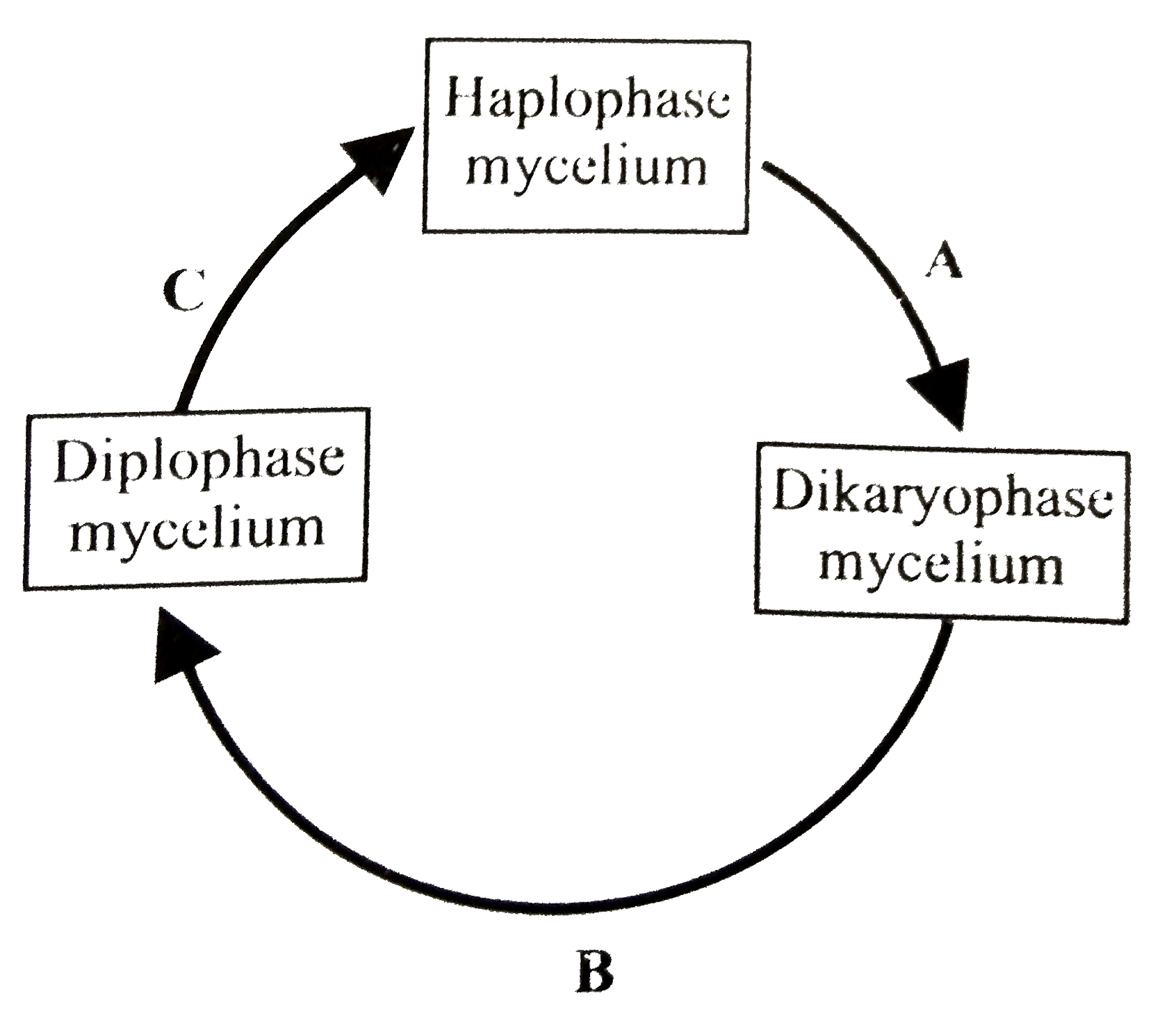In ascomycetes and basidomycetes, the dikaryotic cell is:-
Haploid
Diploid
Triploid
Polyploid
The correct Answer is:A
To solve the question regarding the nature of the dikaryotic cell in ascomycetes and basidiomycetes, we can follow these steps:
1. Understand the Terms:
- Dikaryotic Cell: A cell that contains two genetically distinct nuclei.
- Ascomycetes and Basidiomycetes: Two major groups of fungi.
2. Process of Plasmogamy:
- In fungi, the process of plasmogamy refers to the fusion of the cytoplasm of two parent cells (hyphae) without the fusion of their nuclei.
3. Formation of Dikaryotic Hyphae:
- After plasmogamy, the resulting structure is a dikaryotic hypha, where each cell contains two haploid nuclei (one from each parent).
4. Nuclear Fusion:
- Eventually, these two haploid nuclei may fuse to form a diploid nucleus, but this occurs after the dikaryotic stage.
5. Conclusion on Dikaryotic Cell Nature:
- Since the dikaryotic cell contains two haploid nuclei, it is classified as haploid in nature, despite having two nuclei.
6. Answer the Question:
- Therefore, the correct answer is that in ascomycetes and basidiomycetes, the dikaryotic cell is haploid.
Final Answer:
The dikaryotic cell in ascomycetes and basidiomycetes is haploid.
---
- Dikaryotic Cell: A cell that contains two genetically distinct nuclei.
- Ascomycetes and Basidiomycetes: Two major groups of fungi.
- In fungi, the process of plasmogamy refers to the fusion of the cytoplasm of two parent cells (hyphae) without the fusion of their nuclei.
- After plasmogamy, the resulting structure is a dikaryotic hypha, where each cell contains two haploid nuclei (one from each parent).
- Eventually, these two haploid nuclei may fuse to form a diploid nucleus, but this occurs after the dikaryotic stage.
- Since the dikaryotic cell contains two haploid nuclei, it is classified as haploid in nature, despite having two nuclei.
- Therefore, the correct answer is that in ascomycetes and basidiomycetes, the dikaryotic cell is haploid.
The dikaryotic cell in ascomycetes and basidiomycetes is haploid.
Topper's Solved these Questions
- DIVERSITY IN LIVING WORLD (PLANT DIVERSITY)BOOK - ALLENCHAPTER - DIVERSITY IN LIVING WORLD (PLANT DIVERSITY)EXERCISE - Assertions and Reason
45 Videos
- DIVERSITY IN LIVING WORLD (PLANT DIVERSITY)BOOK - ALLENCHAPTER - DIVERSITY IN LIVING WORLD (PLANT DIVERSITY)EXERCISE - EXERCISE-II
153 Videos
- DIGESTION AND ABSORPTIONBOOK - ALLENCHAPTER - DIGESTION AND ABSORPTIONEXERCISE - S
28 Videos
- DOMESTICATION OF PLANT (PLANT BREEDING)BOOK - ALLENCHAPTER - DOMESTICATION OF PLANT (PLANT BREEDING)EXERCISE - S
28 Videos
Similar Questions
Knowledge Check
Given is the representation of life cycle of members of classes Ascomycetes and Basidiomycetes. Select the correct option for processes A,B and C.
 AABCKaryogamyPlasmogamyMeiosisBABCPlasmogamyKaryogamyMeiosisCABCPlasmogamyMeiosisKarogamyDABCKaryogamyMeiosisPlasmogamy
AABCKaryogamyPlasmogamyMeiosisBABCPlasmogamyKaryogamyMeiosisCABCPlasmogamyMeiosisKarogamyDABCKaryogamyMeiosisPlasmogamy
In the life cycle of ascomycetes and basidomycetes cells are
View Solution[A] : Ascomycetes and basidiomycetes are septate fungi .
[R] : The hyphae are divided by few or many partitions or cross walls .
View Solution$ In Basidiomycetes, there are preset dikaryotic cells called Synkaryons.
! Four exogenous spored are produced in Ascomycetes.
View SolutionA stage peculiar to ascomycetes and basidiomycetes is
View SolutionThe characters related to ascomycetes are
View SolutionAsexual spores in ascomycetes are mainly
View SolutionAscus in ascomycetes contains 8 ascospores. These are formed as a result of
View Solution
